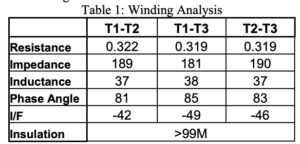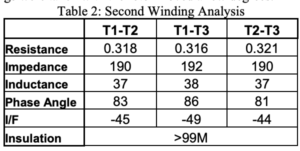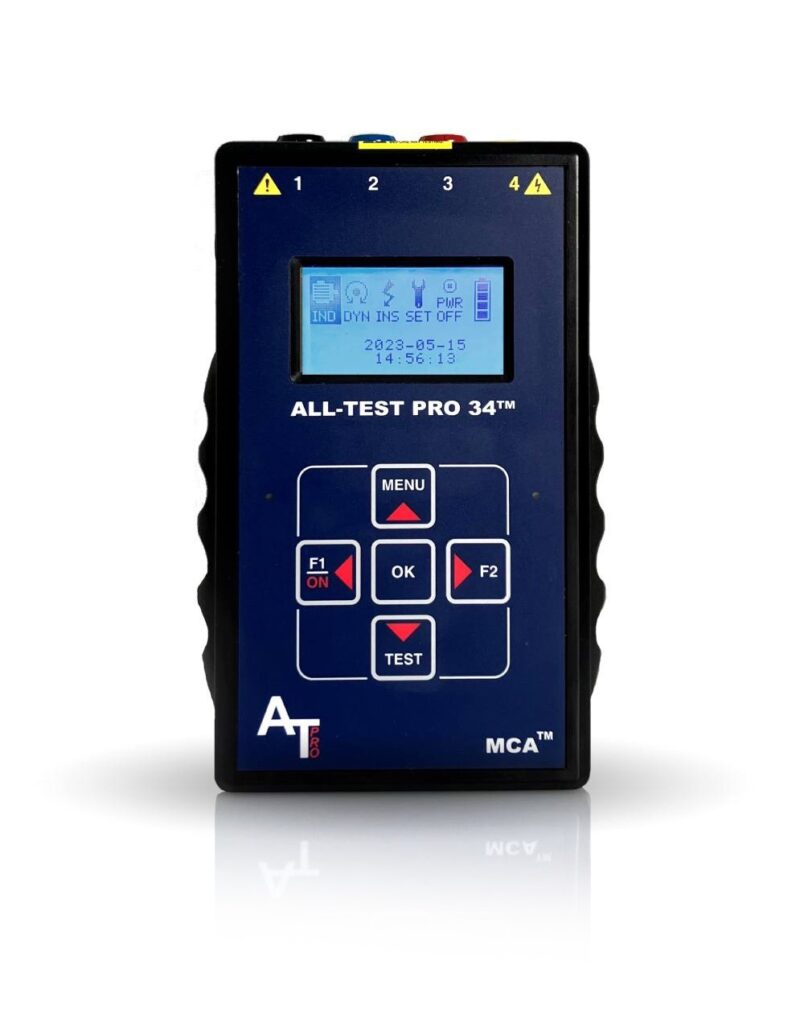Synchronous Motor Rotor Fault Analysis
A large 8,000 HP, 13.2 kV, 200 RPM synchronous motor that operates a reciprocating compressor at a chemical plant tripped on ‘short-circuit’ warning during startup, using a General Electric Multilin®, in 65 milli-seconds.
The motor was tested using a number of different technologies, including surge comparison testing, which did not detect a fault.
An ALL-TEST IV PRO™ was then used to investigate the winding and isolate the fault.
Details:
Location: Mid-Western Petro-Chemical Plant
Equipment: 8,000 HP, 13.2 kV, 200 RPM Synchronous Motor on Reciprocating Compressor
Effected Systems: 25% of Plant Compressed Air
Failure Cost: ~$125,000 per hour
Savings: >$2,000,000
Initial Readings
The initial test provided the following results:

These readings clearly indicated a fault (I/F and Phase Angle). In order to investigate further, and to isolate the fault, additional readings were taken with the rotor moved a few degrees.

Motor Rotor Faults Found
As observed, there were most likely several motor rotor faults as the fault readings follow the re-positioning of the rotor. In addition, impedance and inductance readings do not follow each other, indicating that the winding was in poor condition (confirmed based upon previous partial discharge testing).
The initial conclusion was, based upon how quickly the motor protection tripped, that there was either a catastrophic stator winding failure or that there was a problem with one of the secondary circuits. Based upon two ALL-TEST IV PRO™ test results, there were definite rotor coil faults.
Upon disassembly for further troubleshooting, four of 36 coils on the rotor were found to be completely shorted with another two less severely shorted. In order to get the equipment operating, four spare coils were used to get the motor running while plans were made for rewinding of the motor during the next planned shutdown.
Tests of the secondary (rotor) controls showed damage caused by the rotor short which caused the motor to trip off-line quickly. This circuit was also repaired.
Cost Avoidance
The ALL-TEST IV PRO™ was used to identify a fault that had critical equipment off-line for more than a day while other equipment was used to troubleshoot.
The fault was not identified until the ALL-TEST IV PRO™ was used over a period of 45 minutes. Lost time accounted for several million dollars in lost production.
On a subsequent fault, the ALL-TEST IV PRO™ was used to verify that the motor was in acceptable condition prior to startup and only required minutes with definite results, allowing the motor to be brought back online quickly.
Conclusion
The ALL-TEST IV PRO™ allowed for a complete view of the electrical condition of the motor, identifying whether motor rotor faults existed with a minimum loss in troubleshooting time.
Because the equipment was off-line, the only equipment that was capable of performing this type of test was a motor circuit analyzer.
Periodic testing using the ALL-TEST IV PRO™ would have identified the failure occurring over time before any other type of test method.



